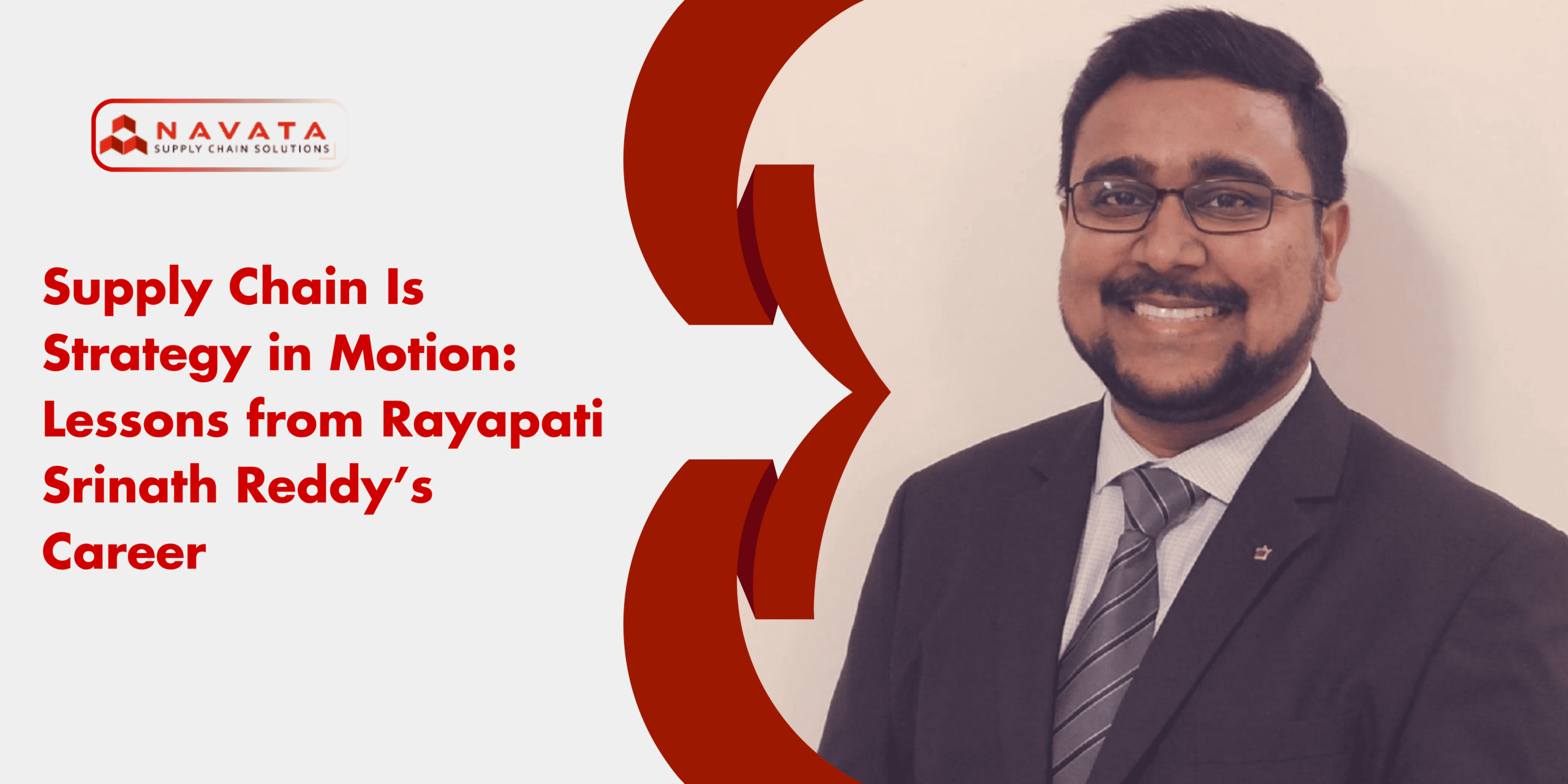For Srinath Reddy, supply chain isn’t just a profession—it’s both legacy and passion. With over 15 years of experience across companies like PepsiCo, Britannia and NourishCo Srinath has handled supply chain strategy, logistics optimization, and planning at scale. In this candid conversation with the Supply Chain Growth Hub, he shares how his roots shaped his path, why behavioral science matters more than models, and the single most important lesson for young professionals.
A Family Legacy and a Personal Calling
“My grandfather ran a transport logistics business in Kurnool district,” Srinath recalls. “I was fascinated by the trucks, the people, the rhythm of the business. That spark never left.”
Though his father pivoted to engineering and academia, Srinath stayed drawn to logistics. After engineering, when faced with a decision between IIMs and NITIE (known as the ‘Mecca of Supply Chain’), he chose the latter without hesitation.
“Supply chain is where strategy meets execution. That’s what makes it dynamic and exciting,” he says.
Before 2000s, Supply Chain Wasn’t Even a Function
“Until the early 2000s, most companies didn’t even have a ‘supply chain’ department,” Srinath points out. “Inventory and dispatch were usually tucked under finance.”
The shift came when multinationals like Ford began redefining operational efficiency—and recognized that planning and execution needed a function of their own. “That’s when supply chain evolved into a serious, strategic role across industries,” he says.
And COVID? “That was the inflection point.”
Srinath explains, “COVID made supply chain visible. For the first time, it wasn’t just a back-end function. It was front-page news—empty shelves, delayed shipments, global disruptions. Companies realized: supply chain is not support, it’s survival.”
Not Just Science—It’s Human Behavior
In a LinkedIn post, Srinath once wrote, “Supply chain is not a science—it’s about understanding behavior.” We asked him to unpack this.
“You can build the best plans and the best tools,” he explains. “But if your people aren’t aligned, your strategy will fail.”
He cites an example from his time as a logistics manager during COVID. “No SOP could’ve helped us when transporters were scared to hit the road. It was relationships, trust, and empathy that kept operations running.”
Even demand forecasting, he says, is as much behavioral as statistical. “The bullwhip effect often stems from how sales teams behave or how optimistic they are. It’s psychology.”
Subscribe to Growth Hub for more in-depth industry leader interviews.
Tackling Fragmentation in Indian Logistics
With multiple vendors across warehousing and transport, logistics in India is notoriously fragmented. Srinath faced this firsthand—and found a clever workaround.
“In one region, we merged the warehouse operational partner and transport partner into a single vendor,” he shares. “This way, they had full ownership—from managing loading to ensuring on-time dispatch.”
This approach reduced coordination gaps and blame-shifting, leading to higher service levels. “It’s about building shared accountability,” he says.
Advice for Young Professionals: Get Your Hands Dirty
Srinath’s message to aspiring supply chain professionals is clear: skip the comfort zone.
“Start on the shop floor. Learn planning, warehousing, transportation—all of it. The early years are for building depth.”
He also stresses learning beyond textbooks. “Study AI in logistics, planning tools, IoT in manufacturing. But more importantly—communicate. The best leaders I’ve worked with are great communicators.”
His final note? “Read. Just 20 pages a day. I’ve learned more from books than dashboards.”



